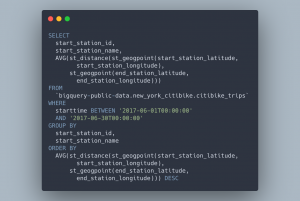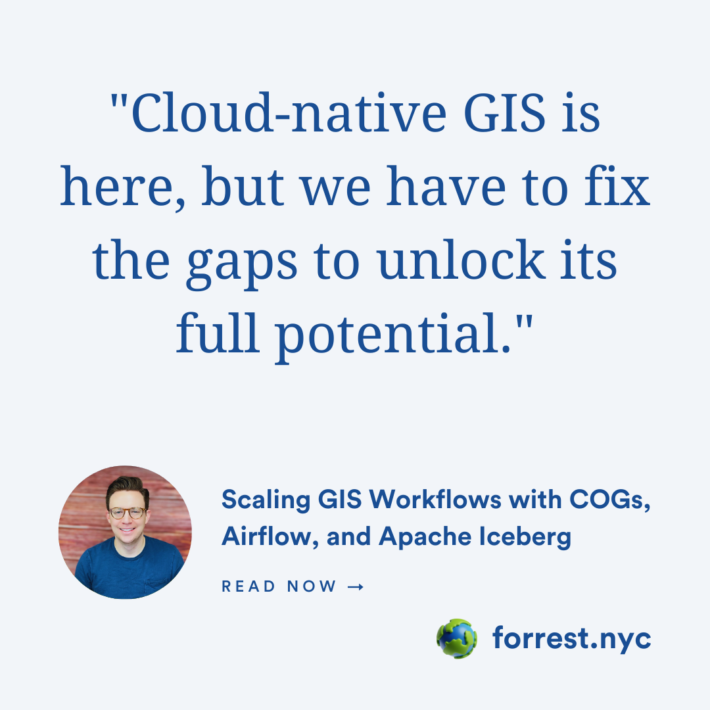For decades, GIS has lived in a world of its own. Specialized software. Obscure formats. A profession that, despite being critical to everything from climate modeling to logistics, has remained siloed from the rest of the data world. But that’s finally starting to change. In the latest episode of the Spatial Stack podcast, I sat … Continue reading Breaking the GIS Silo: Why GeoParquet and Iceberg are the key to Spatial Analytics at Scale
Tapping into the power of spatial SQL aggregations
Use aggregations in SQL to group your data and perform large scale spatial joins Picking up where we left off from our last tutorial, we will jump right into the next set of topics: Using the WHERE clause to do more advanced filtering of your data Aggregations by grouping your data, filtering aggregated data using … Continue reading Tapping into the power of spatial SQL aggregations
Related posts
Scaling GIS Workflows with COGs, Airflow, and Apache Iceberg
TOP OF THE STACK What we need to do with COGs COGs (Cloud-Optimized GeoTIFFs) are one of the most promising tools we have for making raster data truly cloud-native. They let you stream just the pieces you need, work remotely, and plug into modern geospatial systems without downloading giant files. But after working closely with … Continue reading Scaling GIS Workflows with COGs, Airflow, and Apache Iceberg
From Desktop GIS to Cloud: A Beginner’s Roadmap to Modern GIS Tool
Modern GIS is changing fast. If you’ve been working with QGIS, ArcGIS, or any other desktop GIS tool, you’ve probably hit some limitations—datasets getting too big, processing times slowing down, and collaboration becoming a challenge. The good news? The cloud offers a way forward. But how do you make that transition? How do you go … Continue reading From Desktop GIS to Cloud: A Beginner’s Roadmap to Modern GIS Tool




